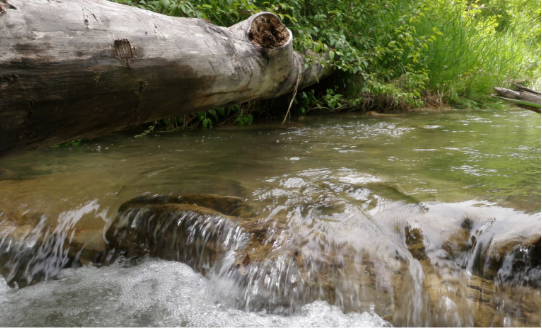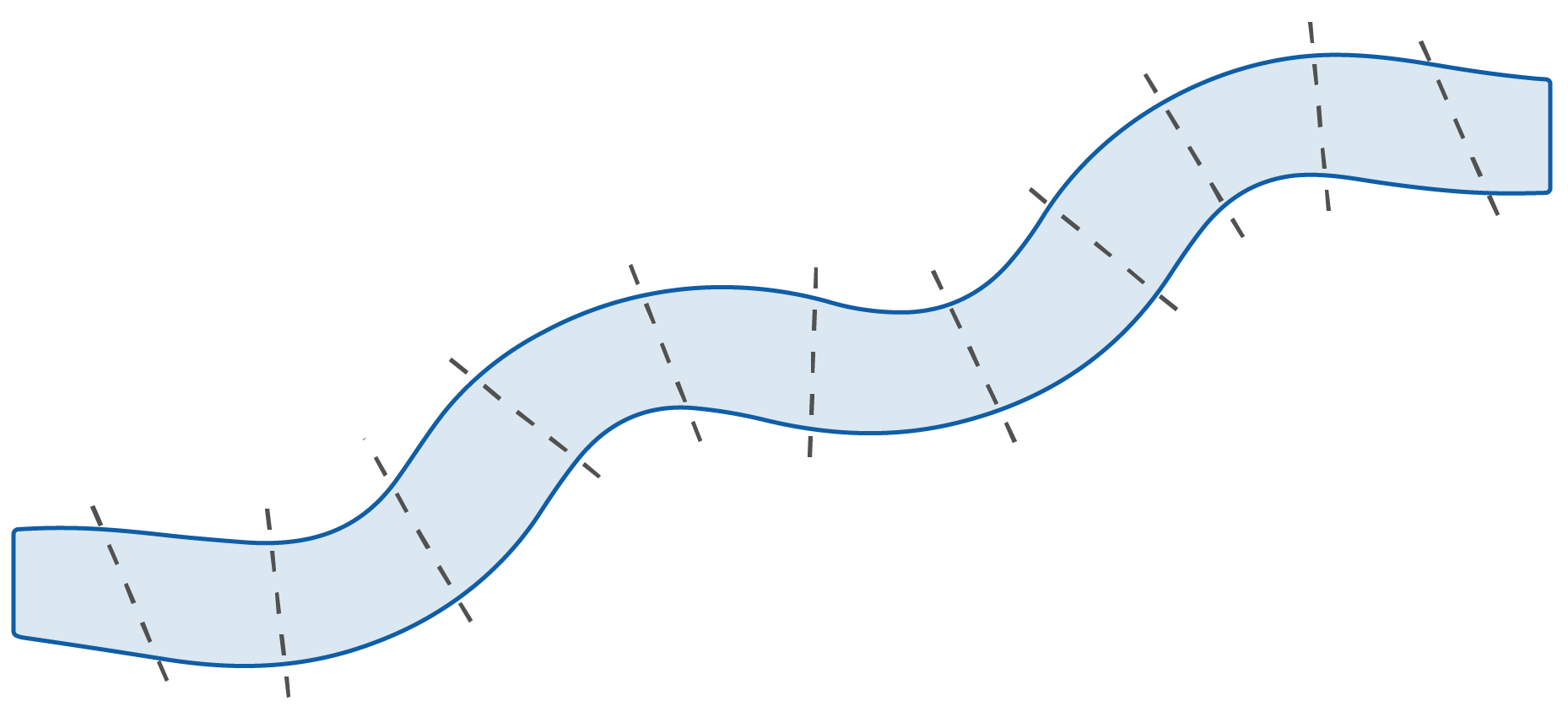Observations of stream habitat can tell us about its health. Throughout the sample reach, crews record the depth, assess how swiftly the stream is flowing, and count submerged branches and logs. At 11 equally spaced transects (cross-sections), crews also evaluate the size of rocks and pebbles in the stream, record the amount of overhanging vegetation, and identify signs of human activity.
How are these data used?
Observations are used to determine values for four physical habitat indicators.
Physical Indicators

In-stream habitat measures the complexity of habitat providing cover for fish and other organisms within the stream and its banks. Cover features include large woody snags, boulders, rock ledges, undercut banks, overhanging vegetation, brush and tree roots. Channelizing streams, hardening shorelines, and removing vegetation and snags can result in habitat loss.
Where is in-stream fish habitat observed?
of fish habitat throughout
the sample reach.

To learn more, see the
NRSA Field Operations Manual.




